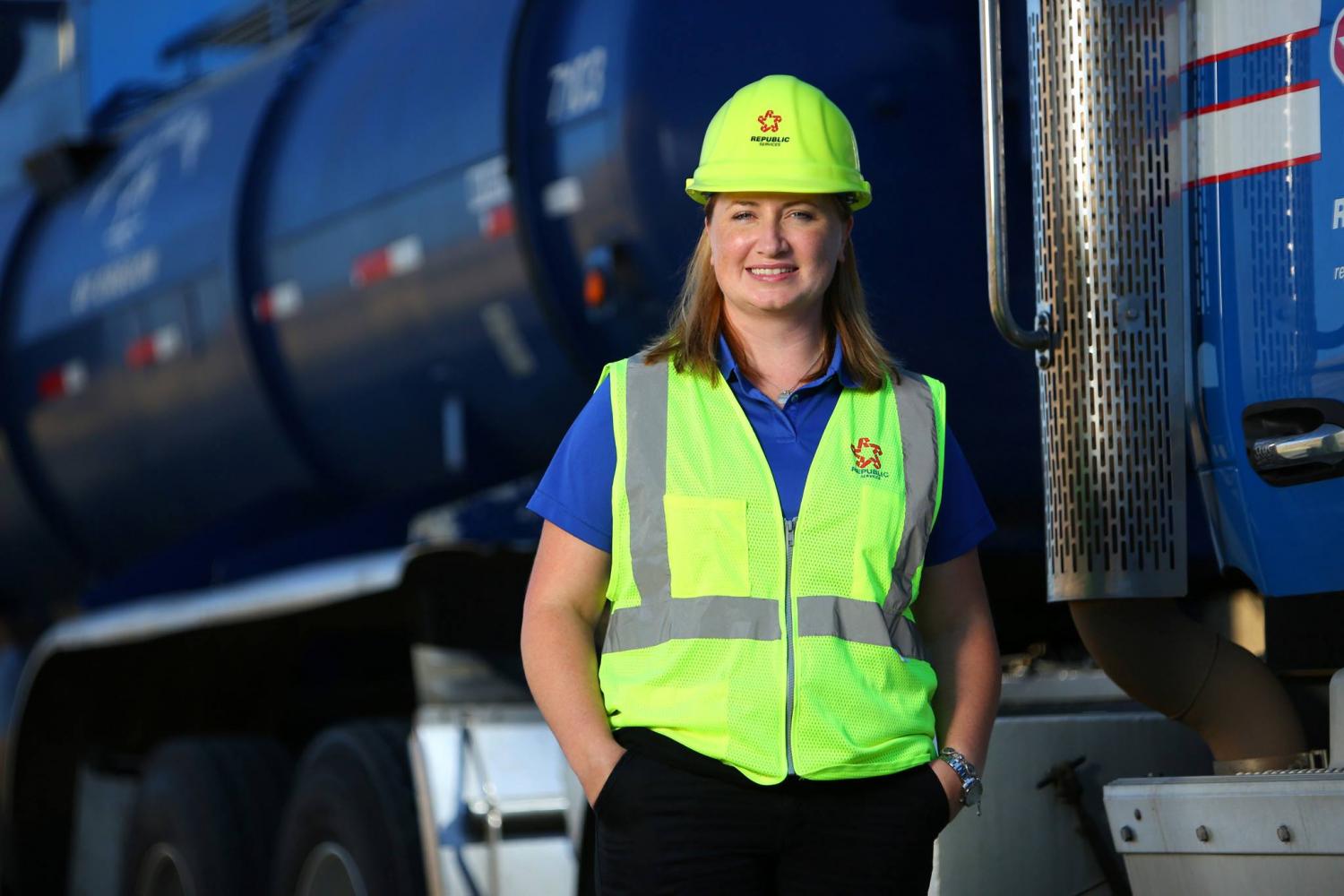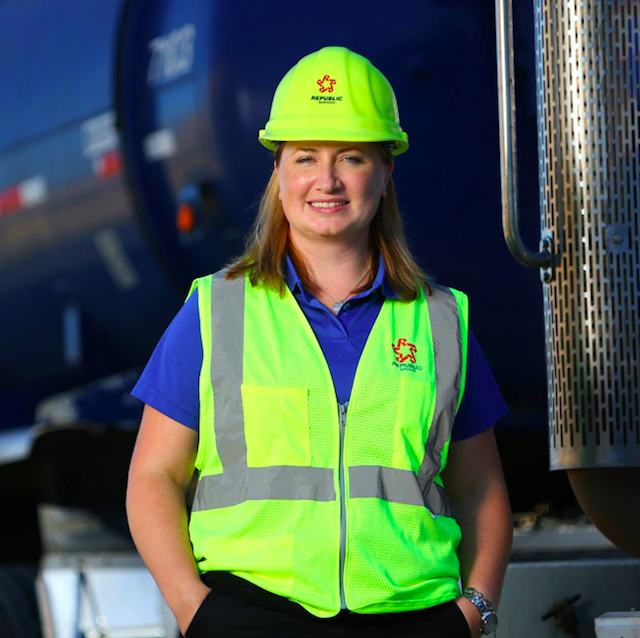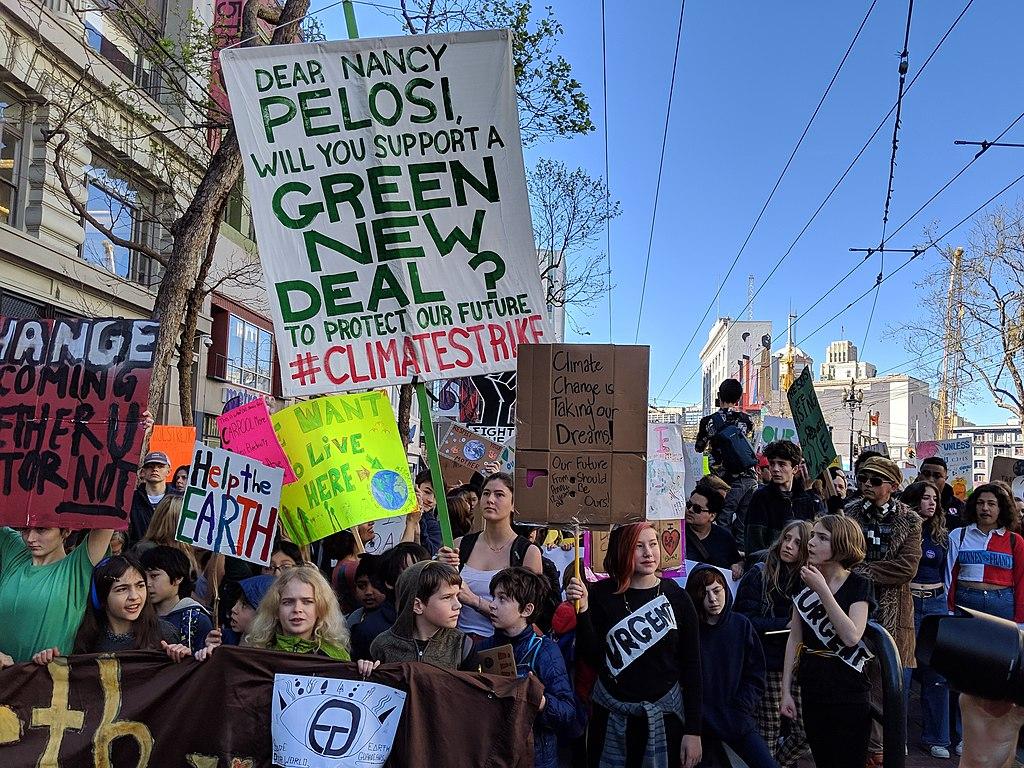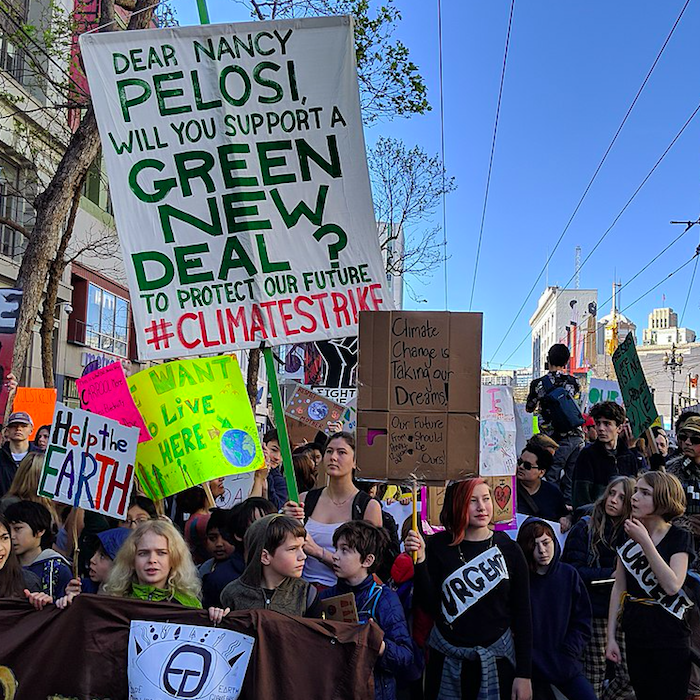Boost Sustainability and Community at Your HQ: A Case Study in Permaculture


For several years, we have seen more businesses take on creative projects related to gardening and green space. Some have added public green spaces to their corporate campuses to engage the communities where they do business, while others are experimenting with gardens for employees in order to boost workplace wellness.
The snowboard company Burton, for example, created gardening plots for employees at its Burlington, Vermont, headquarters. Technology companies such as Facebook are transforming rooftops into areas where employees can take a quick respite from the office to relax or even work on their laptops in a more “chill” environment.
But what about all of that open space between buildings that is barely touched? Those large swaths of grass intersected by concrete walkways may be the new frontier for companies that want to inspire workers and boost health and wellness while mitigating their environmental impact.
A new take on community gardens
Is your company occupying land with vast amounts of lawn that is barely touched? Is the executive team looking for new ways to reduce emissions, take a stand on environmental stewardship, or engage employees and the local community? Those lawns within your corporate campus could be used for a better purpose. Take a look at one college campus in New England for ideas on how to maximize open space that otherwise sees little use.
Permaculture catches on at this New England campus
At the University of Massachusetts, Amherst, permaculture gardens have become an important part of the community, a place for education and a way to work toward a more sustainable future. Created by students and first funded by the university’s administration in 2010, the UMass Permaculture Initiative converts underused grass lawns on the Amherst campus into edible, low-maintenance and easily replicable gardens.
First coined by Bill Mollison back in 1978, permaculture is “a set of design principles used to create resilient systems that model natural ecosystems,” says Xochiquetzal Salazar, sustainability coordinator for campus gardens at UMass Amherst. “[It’s] kind of a long way of saying that we’re trying to do what nature does really well and still grow some food in this garden.”
Permaculture is more than supplying the cafeteria salad bar
Like other forms of sustainable agriculture, permaculture carries benefits that go far beyond growing fruits and vegetables. Healthy soil is a carbon sink: As plants use sunlight, carbon dioxide and water to create their own food through photosynthesis, their roots deposit carbon into the soil. This natural nutrient exchange makes soil more fertile and increases its water retention capacity—which leads to better crop yields, as well as a net reduction in atmospheric carbon, giving sustainable farming approaches like permaculture the potential to help fight climate change. “The heart of permaculture is more than just about sustainability; it’s about regeneration,” Salazar told Northeast Climate Hub. “When we’re talking about mitigating climate change, that’s a really important conversation that needs to start happening.”
At UMass Amherst, five permaculture gardens serve as food sources and hands-on educational resources—reducing food transportation costs and emissions and familiarizing students with sustainable design. On the surface level, the gardens offer “a beautiful space with a different aesthetic than the rest of campus,” says Daniel Bensonoff, sustainability coordinator of campus gardens at UMass Amherst. “It’s a chance to reconnect and pay attention to natural rhythms.” These gardens also provide space to examine ecological design, consider how to redesign space, and learn more about the “nitty gritty” parts of planting, he explains.
“Permaculture, in general, offers people a way to put their values and beliefs into practice,” Bensonoff adds. “It’s a chance to be positive agents. Humans can not only do less harm, such as by recycling, but [also] create beneficial ecosystems.”
An approach like this is not only beneficial for universities like UMass Amherst, but also for any stakeholders looking to actively combat climate change, grow local, develop a community and reduce their ecological impact.
A lasting ‘permaculture’ at UMass Amherst
The university’s first permaculture garden began with students taking a sustainable food and farming course, who were inspired to create a major impact on the community and had an interest in edible landscapes. Thus, after careful planning, the Franklin Permaculture Garden was established in 2010 as the first permaculture garden on campus.
The Permaculture Initiative has since grown to include pollinator boxes and four other gardens, including the Berkshire Garden, and won the 2012 Campus Champions of Change Challenge awarded by the White House.
“This was a student-created project,” Bensonoff says. “It became an important part of the institution. It’s important for students to know that they can make an impact and positive change.”
Make sure you invest sufficient time and resources in a garden
For those interested in starting their own permaculture project, Bensonoff advises to “slow down and do the work of making careful observations of physical and social landscapes. Think about what is going to happen here over time . . . if we’re thinking about long term change.” In a place of higher education, there is a high turnover rate because of students graduating, he explains, so the university had to develop a plan for the garden that reflected this reality. This included a succession plan, allowing for the garden to be as public as possible and, in addition, renew local resources in the community.
“You can do everything we did with a fraction of the funding, if you are careful with planning and use your local resources,” Bensonoff says. This involves what he called the “permaculture paradigm,” meaning that you should map out all possible resources and collaborations. After coming up with an idea, he thinks about who else might be interested in it and who might have valuable skills allowing them to contribute to such a project. “It does take time and energy to build these networks, but it pays off in the long run," notes Bensonoff.
Permaculture spaces can serve as a space between public and private. Anyone at the university can harvest from the gardens, which has created opportunities for these spaces to engage and educate students. Student and staff gardeners placed sign postings to explain how much food can be harvested and when it would be ready for harvesting, in order to avoid killing plants and encourage participation.
“We are always looking for people to slow down and pay attention to their surroundings. We would like [the garden] to have an impact on everyone,” says Bensonoff. To increase public engagement, the university holds events in the gardens, including film screenings, talks, hands-on workshops and partnerships with organizations like the local farmer’s market.
Community building on a transient campus
Another factor adding to the permaculture gardens’ success has been partnerships. The gardens operate with drop-in hours for volunteers and a practicum course that requires three hours a week per student in the gardens. The program has partnered with UMass Dining since its inception, as well as local farming and the student Farmer’s Market. Next year the university is considering a partnership with the Isenberg School of Management, its business school, to focus on and promote “ecopreneurship” for those interested in business and making environmental change.
A movement that could gain traction worldwide
While the permaculture movement is at its relatively nascent stage, this trend has the potential to scale up and help curb environmental degradation, boost food security and offer opportunities for skills building.
The list of permaculture projects across the globe include a garden at UNC-Ashville, an African Woman Rising project in northern Uganda that is helping to feed refugees, Recinto del Pensamiento in Colombia’s coffee growing region, and the Blue Mountains Edible Gardens Trail in Australia.
Image courtesy of UMass Amherst Permaculture Initiative via Facebook
Smaller Brands Can Help End Global Poverty, Too


It's not always about being big. Smaller brands are finding that a relatively modest amount of money can help transform the lives of women and their families worldwide.
In the global fight against poverty, a quiet revolution in corporate giving has been bubbling under the surface. Smaller brands are finding that a relatively modest amount of money can help transform the lives of women and their families. One important strategy is to fund microloans for women, who worldwide are more likely to be impoverished than men. The result of this creative means of financing can make a significant difference in their families and communities.
Brands are also finding that they can grow their corporate giving profiles and contribute to a broader impact on poverty by working in collaboration with other brands.
One such collaboration is the Whole Planet Foundation (WPF), the anti-poverty organization established by the Austin, Texas-based supermarket chain Whole Foods in 2005.
WFP focuses on microloans, which the organization has designed to ensure ease of access; the way in which this program works is critical because acquiring seed money is a formidable task for anyone in poverty. Such an obstacle is especially overwhelming for women, who are routinely denied opportunities in education and commerce. The average initial loan for a borrower is $178, and WPF does not require all of the formalities of contracts and loan collateral.
Microloans and their ripple effects on poverty
The acai-centric company Sambazon is a good example of how smaller brands can build new economic opportunities for women through microloans. The company has contributed more than $260,000 for microloans organized by WPF over the past eight years. According to Sambazon, the funds provided for about 4,100 micro loans that in turn have benefitted more than 22,700 people.
Sambazon also has partnerships with more than 30,000 family farms across the Amazon, and this year the company stepped up its efforts by pledging a $50,000 donation to WPF’s Supplier Alliance for Microcredit.
Water and poverty
Numi Organic Tea illustrates how brands under the WPF umbrella are leveraging the microfinance community to address foundational issues that contribute to entrenched poverty, going beyond access to seed money.
Numi has focused on access to clean water, an area that also complements its core business. The company views its contributions to WPF in the context of other initiatives including the Prosperity Campaign and Fair Trade along with its own foundation, Together for H2OPE.
“Whole Planet Foundation’s work funding microfinance institutions benefits primarily women who have so much at stake to help lift their families out of poverty,” explains Numi Tea co-founder Reem Rahim Hassani. “From one female entrepreneur to the next, the value that brings to our children is priceless.”
Poverty and education microloans
Another WPF donor, The Republic of Tea, has also extended its microloan experience to address broader issues that have an impact on women. The company created Women of Tea, an educational program that provides additional resources for women in Sri Lanka.
Women of Tea is a partnership with the Ethical Tea Partnership and the PALM Foundation. By providing guidance on nutrition, hygiene and financial literacy, the program complements the Republic of Tea’s contribution of almost $150,000 that funded more than 2,000 microloans through WFP.
Partnering for empowerment
Another factor contributing to WPF’s track record of success is a network of local microfinancing partners, who understand local market conditions and help individual borrowers spot opportunities. That network connects brands with individual entrepreneurs around the world.
WPF’s microfinance partner in Indonesia, KOMIDA, cites the example of a borrower named Erliana, who started a roadside business selling salted fish. The first loan she received made all the difference for her family. The microfinancing that KOMIDA has made available to her has allowed her purchase fish for her husband to salt and prepare for sale. She began two years ago with a $137 loan and currently carries a balance of $342.
Dozens of other microfinance partners work with WPF worldwide, from Burkina Faso to Vietnam.
Core competencies matter
The company Papyrus-Recycled Paper Greetings illustrates how the microloan model can dovetail with a company’s core competencies. Papyrus explains:
“We know that helping to ensure we have a healthy planet on which our friends and loved ones can enjoy the personal connections we inspire, a planet on which innovation and entrepreneurship can flourish in all circumstances, is integral to the success of achieving our mission of making life’s moments extraordinary.”
The company also references its early origins, not unlike how many women worldwide become inspired to start their own businesses. Papyrus began as a “small family business run out of a kitchen,” and two friends brainstormed an idea that grew and became Recycled Paper Greetings.
The company has staked out a high-profile position for itself in WPF’s history of collaboration. It founded the organization’s annual $100,000 fund for supplier funding and also participates in various WPF field activities.
Raising awareness about poverty
Leading brands are also part of the WPF collaboration. When Unilever acquired Seventh Generation in 2016, for example, it also acquired a wealth of microloan activity.
Seventh Generation cites Chicago-based Sales Director Gayle Grindley, who is in her fifth year of volunteering with WPF. She visits clients in the U.S., South America, Africa and Asia. She has become a compelling spokesperson for microloans that support and expand the work of aspiring women entrepreneurs.
In a recent Seventh Generation blog post, she explains:
“This isn't about getting rich. This is about doing better every single day . . . I’ve seen women move from a dirt floor to being able to put down mats. I've seen women move from fire as a source of light, to being able to have a generator, so now they have electricity.”
Seventh Generation has also produced a video, filmed in Nepal, to spread the word about the results of women who have secured microloans due to WFP’s programs.
You might be small, yet can have an outsized impact
It has become commonplace for leading global brands like Unilever, Starbucks and Levi-Strauss to develop high-impact social responsibility profiles, from leading on renewable energy to taking stands on hate speech and politically sensitive issues. That can create the impression that making a difference globally is a monumental task beyond the reach of smaller brands.
Nevertheless, by contributing to a microloan collective, smaller brands can generate new opportunities to connect with other nonprofit organizations, raise their corporate responsibility profiles, and attract and retain employees whose passions contribute to a company’s core competencies.
Most importantly, microloan programs provide businesses of any size with an opportunity to make a significant difference, one woman at a time, with benefits that can ripple far beyond her household and even her local community.
Image credit: Republic of Tea/Facebook
The Missing Ingredient in Corporate Sustainability Rankings


In the corporate responsibility space, lists or rankings can help stakeholders assess ESG performance and identify leaders from among those making environmental commitments – and can also help companies evaluate their own performance and attract top talent.
Companies spend countless hours every year applying to appear on elite lists, such as Fast Company’s “50 Most Innovative Companies” list, Fortune’s “Change the World” list, Forbes’ “The World’s Most Reputable Companies” list, or Glassdoor’s “Best Places to Work,” to name a few.
After all, who wouldn’t want to claim, “voted the best/most [fill in the blank] company for three years in a row!”?
In the field of corporate and social responsibility, these kinds of lists or rankings can help stakeholders assess corporate environmental performance and identify leaders from among the hundreds that have made environmental commitments – but they can also help companies assess their own environmental performance and attract top talent.
Yet as a new report reveals, these lists should be taken with a grain of salt, because by leaving out corporate lobbying activities, top-tier rankings provide stakeholders an incomplete picture of a company’s sustainability ambitions and performance. And because they neither recognize support for nor penalize opposition to climate policy, they don’t actually measure leadership.
The urgency and magnitude of the climate challenge demands a much bigger response than cutting greenhouse gas emissions within a company’s facilities or even its entire supply chain. Only public policy can deliver the pace and scale of reductions necessary to avoid the worst impacts of climate change, which is expected to cost the U.S. economy between $280-520+ billion annually by the end of the century.
As the co-founder and executive director of InfluenceMap notes, “Judging companies solely based on operational and product emissions is insufficient.” Or as the Harvard Business Review has noted, “Green ratings ought to include political transparency scores to get a fuller picture of corporate greenness.”
Why, then, does only one of the top corporate sustainability rankings recognize businesses for lobbying for pro-climate policies?
The short answer is a lack of transparency around lobbying activities, whether related to climate change or anything else.
Fortunately, this is starting to change. Shareholder resolutions demanding transparency on corporate lobbying activities continue to grow in number, as do shareholder resolutions demanding analysis of climate risk. As these pressures converge, it will create a clear opportunity for business leaders to show leadership by making sure their political activities match their sustainability rhetoric.
In the meantime, ranking entities could improve transparency by recognizing or even requiring disclosure of corporate engagement in climate policy. This would enable ranking entities to give their audiences ‒ consumers, investors, employees and companies themselves ‒ a more complete picture of a company’s sustainability performance.
This is of course easier said than done, and many questions remain, such as how to evaluate and score lobbying activities consistently across rankings. The new report, The Blind Spot in Corporate Sustainability Rankings: Climate Policy Leadership, recommends that as a starting point, rankings entities ask companies questions drawn from the U.N. Global Compact Guide for Responsible Corporate Engagement in Climate Policy. The important thing is to begin collecting this information in some form.
The most powerful tool companies have to fight climate change is their political influence. Only when sustainability rankings reflect how companies are using that influence can they truly show what leadership in sustainability looks like. And that’s a list worth striving to be on.
Image credit: Jeremy Goldberg/Unsplash
The Benefits of Female Leadership: Thinking Outside of the Box


When it comes to hiring women in non-traditional fields, the global recycling and hazardous waste company Republic Services has made its mark.
When it comes to hiring women in non-traditional fields, the global recycling and hazardous waste company Republic Services has made its mark. Let’s start with its operations: The solid waste collection company now employs 65 female drivers out of its office in Baton Rouge, Louisiana. That’s 65 more female drivers than the office had on its roster 15 years ago. Yes, you read that right—from zero to 65 since 2004.
An opportunity within a crisis
As with many instances of progress, Republic’s opportunity to change the gender game arose from a crisis. About 15 years ago, Sharon Mann, now the general manager at Republic Services of Baton Rouge, was faced with a driver shortage. She saw the need for a radical change in the company’s recruiting strategy, and she decided that women drivers could be part of the solution.
The experiment succeeded beyond expectations—and it provides a case study for companies seeking to diversify their teams, grow their workforce and improve performance, too. “A great leader is only successful if they have successful people working for them,” Mann says. “It's about choosing the right talent to be on your team and making sure they see the vision that you see.”
Inclusive leadership starts with culture
Though Mann emphasizes that basic leadership qualities are universal and independent of gender identity, her own career path at Republic reinforced her confidence in women drivers. The corporate culture has also continuously supported Mann’s confidence that Republic would be a good fit for female employees.
Mann envisioned a career in psychology before starting as a temporary worker with Republic in 1986. She worked full time as a dispatcher and then moved into various managerial assignments. When she determined a need for more stability in her household and therefore wanted to spend more time at home, Republic accommodated the change. “My kids were coming of age and traveling was a little bit of a challenge because, at that point, I just didn't really want to miss [their] football games,” Mann explains. “The company was gracious enough to allow me to come here and be operations manager."
Her current position as general manager in Baton Rouge was made possible by the company’s family-friendly policy. The position opened up when her predecessor relocated to a Republic office in Texas to be closer to family. “This company has always been very accommodating from a family perspective,” Mann explains.
Forming partnerships for strategic recruiting
Mann recognized that recruiting women drivers was an outside-of-the-box approach to the prevailing hiring strategy.
The company had no rule against female drivers, but it did not have a welcome mat, either.
“I don't think that women have a hard time getting into our industry. I think [the challenge is] getting women to be attracted to our industry,” Mann explains. “Women were not aware of our industry, or what the industry could offer.”
Forming partnerships for strategic recruiting
To develop a recruiting strategy for women drivers, Mann reached out to the city of Baton Rouge and local women’s services groups. A key element in the strategy was to focus on the existing female talent pool among city and school bus drivers. “The reason it was attractive to me is because we service residential neighborhoods. School bus drivers, I feel, have the same mentality that we do. You have to put safety first,” Mann said. "I mean, they're transporting precious cargo. They're in the same neighborhoods that we are twice a day, that we’re in most of the day. I really felt that they would be a good fit for us.”
Extra effort pays off
Bus driving skills only cover part of the driver requirements at Republic—drivers also need to operate equipment, and that meant investing more time and effort in training. Some of Mann’s supervisors were skeptical at first, but she encouraged them to allow for another week or two over the conventional two-week training period.
The results were spectacular. “It ended up being very, very successful for us,” Mann recounts. “Even though they did take a little bit longer to train, [new women hires from outside the industry] are some of the best employees we have, because they take care of their equipment, their trucks are immaculate, the customers absolutely love them, and they are very familiar with the neighborhoods that they're servicing. It was a win-win for us.”
Spreading the corporate culture message by word of mouth
If communicating corporate culture to new communities is the key to Republic’s success in recruiting women, then it is the gift that keeps on giving. “Right now, I haven't recruited a female driver probably in seven or eight years. The [drivers] that I have are the best recruiters,” Mann said. “They recruit for me.”
In addition to keeping the pool of drivers stocked, the word-of-mouth recruiting has also attracted more women throughout Mann’s operations, including two in supervisory roles, she said.
Leave nothing to chance
One important lesson drawn from Mann’s success is the need to train and inform male supervisors who have little or no experience working with women.
“That was a bigger challenge for me than anything; that is where everything just started flowing and we started seeing so many applicants come through, and other females were recruiting. The word was out on the street, and people were just bombarding us with applications,” she said. It was then that Mann realized she had to be proactive and make it clear to all supervisors that this demographic shift in Republic’s workforce was a positive trend and was here to stay.
Mann organized training sessions, brought in an outside expert for advice, and provided one-on-one feedback to supervisors. “You have to be fully engaged with your team and be able to coach, mentor and train,” she says. “If people want to work for you, they're going to be successful—and if they're successful, you'll be successful.”
So, what is female leadership?
Breaking the gender barrier is not a simple matter of changing the rules, when there are no rules to begin with.
Mann’s perspective on what it takes for women to assume leadership roles is an echo of her recruiting strategy, in that it entwines corporate culture with personal life.
“There's two things I believe: That you have to work really hard if you want something, and . . . one other thing that I tell my leadership team all the time, if you're not having fun doing what you do, then you need to do something different,” Mann says. “You'll have good and bad days, but you really have to enjoy doing what you're doing. And if you do, it will be very difficult for you not to be successful.”
As for leadership itself, Mann takes a universal perspective. “Your people are the most important asset that you have,” she concludes. “If your people really believe in what you believe in, and they want to work for you, they're going to go above and beyond. And I really feel strongly about my people. I really do.”
Image credit: Republic Services/Facebook
The Student Climate Change Protests Point to the Challenges Engaging the Future Workforce


Who were these young people taking part of the Youth Strike 4 Climate’s global protest? They are the workforce of the future, as well as the customers and clients of companies from which they are demanding action.
The Youth Strike 4 Climate’s global protest on March 15 by an estimated one million students demonstrating against inaction on climate change marks a new generation gap issue. A larger share of youth in 26 countries are concerned about climate change compared to people over 50, according to a Pew survey.
Who are these young people? They are the workforce of the future, as well as the customers and clients of companies from which they are demanding action.
At a recent CEO Forum organized by Chief Executives for Corporate Purpose CECP, 60 CEOs cited “prepare for the future of work” as their number one concern. Today, 30 percent of the workforce is millennial; by 2025, 75 percent will be of that generation. In that cohort, 76 percent consider a company’s social and environmental commitments before deciding to work for them, according to a PwC report.
This workforce will soon be joined by the oldest segment of the Youth Strike 4 Climate group, those who are now in their early twenties. Companies will need to step up their commitments and their reporting on sustainability initiatives to attract and retain the best talent among these future workers. Newer and younger employees will expect a company’s mission to include mitigating climate change as part of its core purpose.
Case Study: Dick’s Sporting Goods
Barriers that have held businesses back from acting on gun control continue to be broken down by Dick’s Sporting Goods. As covered by TriplePundit, the company is removing guns from 125 of its 729 stores, following last fall’s 10-store trial in which hunting products were replaced by sporting goods and apparel. That test produced better margins and higher sales, CEO Ed Stack told Bloomberg.
Early last year, after the Parkland School shooting, Stack said, “We needed to make a statement about what was going on in this industry." The company then banned sales of assault weapons and raised the age limit for gun sales to 21.
Dick’s stand was a factor in slower 2018 sales (down two percent) although the company’s gross profit margin remained the same and earnings per share actually rose. Analysts noted that being a national retailer and a go-to brand name has made Dick’s profitable over the past decade, with a return on equity averaging 12.3 percent. Shares of Dick's are up 19 percent since the company made the decision to stop selling guns, easily outpacing the S&P 500 Index and retail sector averages over the same period, according to Seeking Alpha. Also noted was a 12 percent decline in national firearms sales for 2018.
Stack says Dick’s is not backing down from its stand. “If we had a mulligan, we’d do it all over again,” he told CNBC.
Last month, Stack was one of four CEOs to sign a letter supporting a universal gun control bill that passed in the House. (The others: Chip Bergh, Levi’s; Scott Rechler, RXR Realty; and Blake Mycoskie, TOMS.) Stack recently joined the business council of Everytown, a nonprofit that advocates for gun control, reports Bloomberg.
Previously published in the weekly Brands Taking Stands newsletter - be sure to subscribe!
Image credit: Intothewoods7/Wiki Commons
Bacardi Enlists the Power of the Emoji in New Ocean Plastic Pollution Campaign


The new ocean plastic pollution campaign supported by Bacardi suggests brands can get their message through on a massive scale, even via a simple emoji.
With so many pressing environmental concerns piling up all at once, it can be difficult to make a campaign stand out. Nevertheless, a new ocean plastic pollution campaign supported by Bacardi Limited suggests that brands can get their message through on a massive scale, even via a simple emoji.
Tackling the ocean plastic pollution problem, one straw at a time
Plastic straws are only one small part of the ocean plastic pollution crisis, but they have captured the public’s attention.
Plastic straws have also scored the attention of business, partly because getting rid of them can cut costs and simplify their supply chains. Starbucks and the leading sports and entertainment company AEG are just two of the growing number of global businesses taking steps to ban single-use straws made of plastic from their supply chains, keeping only a few on hand for people who need them.
#TheFutureDoesntSuck ocean plastic pollution campaign
Bacardi teamed up with the organization Lonely Whale last July to launch the new ocean plastic pollution campaign under the banner #TheFutureDoesntSuck.
A plastic straw named Polly spearheaded the launch. In its newest phase, the campaign recruits a sea turtle named Sydney to spread the message about banning plastic straws. The hook is a letter written by Sydney to the Unicode Consortium, the nonprofit agency that oversees the global emoji catalog.
In the letter, Sydney asks Unicode to remove all plastic straws from its roster. Meanwhile, Bacardi and Lonely Whale ask individuals and businesses to pledge their support through TheFutureDoesntSuck.org. You can read the letter at TheFutureDoesn’tSuck.org or, better yet, enjoy activist and comedian Daniel Franzese (aka Damien of Mean Girls) reading it aloud on YouTube.
The strategy is a compelling one. Instead of appealing only to consumers and businesses, the Sydney campaign leverages the power of emoji and other social media imagery to promote awareness of plastic straws and the ocean plastic pollution crisis.
That may sound like a tiny poke at a gigantic problem. However, emojis and other social media images form a powerful, global language that reach billions of people every day, no matter what language they speak at home.
Speaking of global languages and ocean plastic pollution
In a press release announcing the new emoji campaign, Bacardi and LonelyWhale give a shout-out to the United Nations Sustainable Development Goals (SDGs), which “stimulate action in areas of critical importance for both humanity and the planet.”
This is where the new emoji-based campaign gets interesting. The United Nations released the set of 17 SDGs back in 2015. The goals were designed to apply to nations, as a way to measure and track progress toward a milestone of 2030.
Though few if any companies can make a meaningful commitment to all 17 SDGs, many are beginning to focus on one or more SDGs that dovetail with their strengths and core competencies as businesses. The SDGs can also provide businesses with a window into global conversations about sustainability and corporate social responsibility.
In the case of Bacardi, SDG 14 (sustainable oceans) is just one among several goals that the company can reference.
The ocean plastic pollution whack-a-mole
If the end goal is to substantially reduce plastic in the global economy, it is a Sisyphean one.
ExxonMobil is among a number of global oil and gas stakeholders that have been doubling down on plastics and petrochemicals as hedge against falling demand for fossil fuels. They are also eyeballing the potential for market growth in Asia and elsewhere.
This countertrend makes it all the more important for businesses like Bacardi to team up with experienced advocacy organizations like Lonely Whale. The plastic straw ban may seem, well, like a straw in the wind, but Lonely Whale puts the force of global collaboration behind it.
Through the Lonely Whale partnership, Bacardi connects its efforts with dozens of NGOs and creative media partners globally.
The rush to petrochemicals may turn out to be a short-lived solution for oil and gas companies, as the plastic straw movement grows and begins to have a broader impact on the role of plastic in a sustainable global economy.
Image credit: Helena Yankovska/Unsplash
From California to Central India: Implementing Water Stewardship at the Local Level


This article series is sponsored by General Mills and produced by the TriplePundit editorial team.
From a young age, most people know the basic requirements of planting: seeds, soil, sunlight and water. Farming and water, specifically freshwater, are intrinsically linked. Agriculture accounts for 70 percent of global freshwater withdrawals, according to the World Bank. In its 2018 Global Responsibility Report, food company General Mills identified water risk as a material issue and pledged to champion the activation of stewardship plans in its priority watersheds across its global value chain.
Jeff Hanratty, applied sustainability manager for General Mills, spoke with TriplePundit about the company’s efforts to identify and address key water risks related to agricultural production. He began by explaining how the organization created its focus on priority watersheds.
Water is an extremely localized issue, and each geographic area has its own unique challenges that affect the quantity and quality of available freshwater. As a result, in 2016 General Mills analyzed 41 watersheds affecting its supply chain globally. Using public tools including the World Wildlife Fund’s Water Risk Filter and the World Business Council for Sustainable Development’s Global Water Tool, General Mills identified eight priority watersheds, Hanratty said.
“We selected the places around the world that have the highest water risk related to our products,” he explained. “What are the key ingredients we can’t get elsewhere? For example, 80 percent of almonds come from California, so that’s where we need to get almonds. Dairy is also location-specific. It is extremely expensive and labor/energy intensive to transport dairy great distances.”
Every few years, General Mills will reassess the risks and determine whether these watersheds are still the most urgent to focus on within the value chain. Future water risk assessments will need to take changes in products, their ingredients and their sourcing geographies into consideration.
General Mills has set a goal to “see activation of a watershed plan by 2025” in each of the eight priority watershed areas. As each area is so different, a common goal across all eight would be counterproductive, if not impossible.
Here’s a closer look at two of the current priority watersheds, and what actions are being taken toward water stewardship in each:
San Joaquin, California
The San Joaquin Valley, located in the southern two-thirds of California’s Central Valley, is one of the world’s most productive agricultural regions, growing more than 250 types of crops. The region is an important supplier of food including tomatoes, dairy, raisins and almonds.
California’s 2014 Sustainable Groundwater Management Act (SGMA) put forth new guidelines to restore groundwater levels and prevent future depletion of stored water. General Mills has worked with a variety of groups to make SGMA compliance easier and more impactful.
California Water Action Collaborative (CWAC) is a collaboration of nonprofit, government, industrial and other partners joining to find common ground in protecting California’s natural resources. General Mills works with Sustainable Conservation and The Nature Conservancy to promote and support on-farm groundwater recharge. In this process, farmers can find out what times during their growing season their fields can be flooded to replenish aquifer supplies, without harming the dormant crops.
“Before on-farm groundwater recharge, California farmers could only choose between two options when there wasn’t enough water: Not farming and leaving the land fallow or farming a less valuable crop that requires less water. This opens up new options,” Hanratty said.
Additionally, last fall, General Mills worked with the Water Foundation, Stanford’s Program on Water in the West (WitW), the Environmental Defense Fund and Maven’s Notebook to fund the California Groundwater Exchange. This website is a “free, collaborative online platform designed to connect water managers, water users and community members with tools and resources to support successful implementation of SGMA.”
Ganges River, Madhya Pradesh, India
General Mills also works with The Nature Conservancy to better understand the challenges and opportunities of wheat farming in the Ganges River Watershed, located in West-Central India. While General Mills purchases only a small amount of the total wheat crop from the Ganges River watershed, it is still a priority area due to the severity of the water risk there.
Hanratty explained further in a 2018 blog post about a visit to the area: “It is not that these regions don’t get rain—they receive more than 39 inches of annual rainfall in a normal year—but almost 90 percent falls in the monsoons (from June to September). With existing water storage infrastructure and the lack of available groundwater, the farmers run out of water by January, although they harvest the wheat in March.”
Farms in India are generally far smaller than those in other countries. Whereas a typical American wheat farm may be 500 to 1,000 acres, the average Indian farm is five to 10 acres, as it has typically been passed down through generations and split among children. As a result, community resources are crucial for these farmers.
Individual farmers may not have the means to invest in large water management systems on their own, but by joining together, they can share in the costs while also sharing in knowledge and best practices. As a potential solution, General Mills is investigating advancing The Nature Conservancy’s Water Fund model in this part of India as it has been successful in similar areas.
“The most critical success factor [is] cooperation amongst farmers to organize and share resources,” Hanratty wrote. “Every farmer we interviewed said if they had more water, and better water management resources, their yields would improve and, in turn, their livelihoods.”
For food companies a global water ambition is important, turning it into local watershed-based action is even more important to achieve impact on water risk.
Image credit: Flickr/tinyfroglet
7 Companies Leading Their Industries in Water Stewardship


This World Water Day, we’re tipping our hats to seven companies that got into the water stewardship game early–and kept at it.
Worldwide, an estimated 780 million people do not have access to clean water. As populations rise and climate change further disrupts the water cycle, the planet will experience a 40 percent shortfall in fresh water by 2030 unless we “dramatically” improve water supply management, according to the United Nations Educational, Scientific and Cultural Organization (UNESCO).
With this in mind, the theme of this year’s World Water Day—”leave no one behind”—is a poignant challenge and call-to-action for stakeholders around the world. In the private sector, companies increasingly view water scarcity as a business risk. But many remain unsure of how to act, as a new survey conducted by GreenBiz and Ecolab, a global provider of water, hygiene and energy technologies and services, reveals.
Ecolab and GreenBiz surveyed 86 companies with revenues of at least $1 billion, and although 74 percent say water is an increasing priority, a whopping 44 percent “have no plan in place” to achieve their water goals. To move forward with the urgency our looming water crisis demands, these companies must collaborate with local stakeholders and learn from stewardship leaders—including fellow corporations that have done it right.
As an example, this World Water Day we’re tipping our hats to seven companies that got into the stewardship game early and kept at it.
1. Marks & Spencer
Two years ago, Marks & Spencer released Plan A 2025—an updated version of its sustainable business transformation program, Plan A. As part of its commitment, the U.K. department store chain pledged to implement water stewardship programs for the most material and at-risk watersheds in its food, clothing and home supply chains by 2020.
The company has worked with the World Wildlife Fund (WWF) to measure water risk in its value chain since 2011. To realize its ambitious 2020 goals, M&S will work closely with local stakeholders in at-risk areas—including water-stressed Western Cape province, South Africa, where the company sources fruit like apples, pears and citrus.
“It’s not going to be easy and we certainly we can’t do it alone,” Amanda Curtis, senior environment manager of Plan A Foods, wrote in a blog post. “[We] recognize the need to work patiently and collaboratively with our stakeholders to effect change on the ground. This collective action is the only way to scale up and make a real difference to the management of water across a region.”
2. Marriott International
Hospitality company Marriott International launched phase two of its Sustainability and Social Impact Goals in 2017. The framework is designed to support meaningful progress toward the U.N. Sustainable Development Goals (SDGs)—including access to clean water (Goal 6) through a pledge to cut water intensity by 15 percent by 2025.
Notably, this goal includes Marriott’s franchise portfolio—over which the company has little direct control. “Putting that stake in the ground was a pretty big step for us as a company,” Denise Naguib, vice president of sustainability and supplier diversity for Marriott, said at Ecolab’s Industry Water Forum last week. “Now the real work happens: How do we then support those franchise organizations and give them the right tools and direction without telling them what to do? Because they are not ours to control.”
Marriott is one of several top companies that collaborated with Ecolab to develop the Smart Water Navigator, announced at the Industry Water Forum in New York. The online tool measures water risk at the facility level—making it ideal for stakeholders like Marriott franchisees. “If you don’t measure it, you don’t know,” Naguib said. “If the individual facility is not clear on where they stand, they don’t know that they should be doing something about it.” You can learn more about the tool here.
3. Kimberly-Clark
In 2017, Kimberly-Clark partnered with Deltares, an independent institute for applied research on water issues, to develop an online dashboard that visualizes water scarcity risks for entire watersheds. The tool, dubbed WaterLOUPE, breaks water use down into sectors and sub-groups, such as industrial users, farmers and households.
The company initially used WaterLOUPE to identify water risks in the river basin surrounding its tissue mills in Colombia. Last month, it introduced the tool to community and government leaders in the Western Cape province of South Africa, which is still recovering from a massive water shortfall that left people standing in line for water last year.
In partnership with Kimberly-Clark, local stakeholders will use the tool to create a water risk assessment for the region—continuing the company’s overall push to encourage collaboration between government, business, communities and NGOs to preserve freshwater resources. “We could reduce our water [use] to near zero, but if the other people in the watershed didn’t do anything, I’m still out of business. I can’t run my plant. My employees don’t have water. My consumers don’t have water,” Jim Bath, director of global environmental services for Kimberly-Clark, said at Ecolab’s Industry Water Forum.
4. Ford Motor Co.
Ford is the world’s first automaker to commit to the Business Alliance for Water and Climate’s Improve Water Security initiative. “The initiative requires participants to analyze water-related risks and implement collaborative response strategies,” Kim Pittel, group vice president of sustainability, environment and safety engineering for Ford, highlighted in a blog post.
Companies must also measure and report water usage through CDP (formerly the Carbon Disclosure Project) and commit to reducing water impact in both their direct operations and value chain. The automaker followed through on these commitments and received high marks from its partners as a result. “Ford is one of only two dozen companies out of 600 to be awarded an ‘A’ grade by CDP for its water management efforts,” Pittel wrote.
5. General Mills
Back in 2016, General Mills analyzed 41 watersheds within its global supply chain and identified eight priority watershed regions to focus its stewardship efforts. “We selected the places around the world that have the highest water risk related to our products,” Jeff Hanratty, applied sustainability manager for General Mills, told TriplePundit.
The company set a goal to “see activation of a watershed plan by 2025” in each of the eight priority watershed areas. We spoke with Hanratty about how the company is executing on these goals in two distinct watersheds—California’s San Joaquin Valley and Madhya Pradesh, India. You can check out our coverage here.
6. Microsoft
Microsoft’s Silicon Valley campus is one of the first net-zero potable water tech campuses in the world: All of the non-drinking water used inside comes from rainfall or on-site recycled water rather than municipal sources, Paul Fleming, water program manager for Microsoft, highlighted in a blog post. The company is also a member of the U.N. CEO Water Mandate, a collaborative water stewardship effort of corporations and NGOs.
As it leads the tech industry in operational water stewardship, Microsoft is also harnessing its technological prowess to help others conserve. The company’s AI for Earth program, a $50 million commitment over five years, will put artificial intelligence tools into the hands of community organizations that tackle environmental challenges, with 20 percent of grantees working on water-related projects as of last year, according to the company.
“A single project supported by Microsoft is unlikely to move the needle, so that means we have to move into partnering and collective action opportunities,” Fleming said at the Ecolab Industry Water Forum.
7. Procter & Gamble
This week, Procter & Gamble (P&G) announced that it delivered 15 billion liters of clean drinking water through its nonprofit Children’s Safe Drinking Water (CSDW) program—meeting its 2020 goal ahead of schedule. P&G is now accelerating these efforts and plans to deliver 25 billion liters—more than 100 billion glasses of water—worldwide by 2025.
As it celebrates its own major milestone, the global packaged goods company partnered with National Geographic to celebrate fellow “Water Champions” on World Water Day. Honorees represent four of P&G’s closest partners and include Carolyn Miles, president and CEO of Save the Children, and JP Suarez, chief administration officer of Walmart International.
Image credit: Ville Palmu/Unsplash
P&G Sets New Goal to Deliver 25 Billion Liters of Safe Drinking Water Worldwide


P&G announced in advance of World Water Day it would deliver 25 billion liters of water – more than 100 billion glasses of water – by 2025, through its non-profit Children’s Safe Drinking Water (CSDW) Program.
After achieving its 2020 goal of delivering 15 billion liters of clean drinking water one year early, consumer goods giant P&G announced in advance of World Water Day that it would deliver 25 billion liters of water—more than 100 billion glasses of water—by 2025 through its nonprofit Children’s Safe Drinking Water (CSDW) Program.
Since the program launched in 2004, P&G says it has worked closely with a network of more than 150 partners to raise awareness of the global water crisis and provide water to families in more than 90 countries through a simple purification process invented by a P&G laundry scientist. With just one packet, a bucket, a stick and a clean cloth, the company says 10 liters of dirty, potentially deadly, water can be turned into clean, drinkable water in only 30 minutes.
According to the World Health Organization (WHO), nearly 844 million people globally do not have access to clean drinking water. Every day, more than 800 children under age 5 die from diarrhea attributed to poor water and sanitation, according to humanitarian organization World Vision.
In a colossal waste of valuable time, UNICEF estimates that women and children spend 40 billion hours each year collecting and managing water that is often contaminated.
The United Nations has prioritized the need to address these challenges through U.N. Sustainable Development Goal 6, which aims to ensure clean water and proper sanitation for all by 2030.
Tapping into innovation
The P&G Purifier of Water packet was invented by P&G laundry scientists who were originally trying to separate dirt from used laundry water. They invented a breakthrough technology that can enable people anywhere in the world to purify dirty water in a simple, affordable and convenient way. The water purification technology was developed in collaboration with the U.S. Centers for Disease Control and Prevention (CDC).
Global emergency relief organizations, such as AmeriCares, CARE, IFRC, PSI, Save the Children and World Vision, have provided clean drinking water using the P&G packets since 2004, according the company.
Celebrating water champions
P&G is partnering with National Geographic again this year to celebrate World Water Day and share the stories of five “Water Champions” who are working with P&G to help solve the water crisis. The Water Champions represent four of P&G’s largest partners and include:
- Patricia Heaton, Emmy award-winning actress and World Vision ambassador
- Carolyn Miles, president & CEO of Save the Children
- JP Suarez, executive vice president and chief administration officer, Walmart International
- Job Wasonga, project manager, CARE International Kenya
- Allison Tummon Kamphuis, Children’s Safe Drinking Water program leader, P&G
Strength in numbers
P&G and these partners will collaborate in the following ways:
- World Vision, building on the foundation of 2 billion liters of water already provided together, will use P&G packets as a bridge solution and in emergencies for more than 1 million people in more than 15 countries in Africa, Asia and the Middle East.
- Save the Children, which marks its 100th anniversary in 2019, will deliver 100 million liters of clean water to families impacted by natural disasters and emergency situations in Ethiopia.
- Walmart International will support the program to provide 100 million liters of clean water through the in-store 1 purchase = 1 liter campaign in 2019.
- CARE will celebrate 15 years of partnership with P&G by expanding the CSDW program in Kenya to reach more than 100,000 people through schools and clinics, while also continuing support of emergency response and hygiene education efforts supporting 300,000 people in Ethiopia.
Ripple effects of clean water
To date, P&G says its efforts to provide access to clean water are transforming communities by improving health, enabling education and increasing economic opportunities. In many of the stories profiled on the company’s website, children with access to the packets are able to spend more time in school, with fewer illnesses and, for girls, less time spent collecting water.
“We are proud to have reached this 15 billion liter milestone and inspired by the opportunity to make an even greater impact through our new goal,” David Taylor, chairman of the board, president and chief executive officer of P&G, said in a company press release. “This life-changing technology has helped many families over the past 15 years, and we’re eager to help even more in the years to come.”
Image credit: UNICEF Ethiopia/Flickr
EDF Teams Up with Cities and Companies to Preserve Water


EDF has been working with both governments and the private sector to help reduce water usage by finding new ways to boost water efficiency.
According to the NGO Environmental Defense Fund (EDF), the global demand for water is projected to grow by 40 percent by the year 2030 - a sobering reminder as tomorrow, March 22, is World Water Day. A surging global population coupled with increased water scarcity is not only an environmental threat – this trend can also have a detrimental effect on businesses, their operations and supply chains - and of course, brand reputation if they are seen as contributing to the problem.
EDF says it is working to help reduce water usage by teaming up with businesses such as AT&T to look for ways to reduce water. With this year’s World Water Day theme being “Leaving no one behind,” it is also worth noting that EDF is working with both governments and the private sector to take a closer look at their water usage so that businesses and citizens have safe access to this precious resource.
Water scarcity not only imposes a significant impact on the environment, but it can also have a direct impact on businesses. Some of the effects are obvious. When water is scarce, vegetation is unable to grow, which prevents companies who rely on agriculture to produce their products. Indirectly, if water is scarce, the cost of obtaining water will increase, causing businesses to pay more for water while possibly sacrificing other expenditures for the company. Businesses could also find themselves mired in competition with municipalities for water.
EDF’s partnership with AT&T
While many individuals try to live an environmentally-friendly lifestyle, some people have criticized the environmental movement for focusing too much on individual efforts and not enough on holding companies accountable for their actions. To that end, EDF partnered with AT&T beginning in 2010 as the company said it had a strong interest in looking at their water consumption and seeing what could be done. Together, the organizations created a water efficiency toolkit to help reduce water use from cooling towers.
To help extend the success of AT&T reducing its overall water consumption, the company has been working with EDF to pass the tools they developed within the partnership. According to a press release within the partnership’s case study, among the partnership’s successes was finding 28 billion gallons in water savings within commercial buildings across the U.S.
EDF’s focus on cooling towers on buildings
EDF is also focusing on cooling towers, especially in multi-story buildings. Unlike homes that can rely on a central ventilation and cooling system that can move cooler air located outside of the home inside, multi-story buildings rely on cooling towers to produce cooler air. Cooling towers rely on piped water to keep a building’s temperature at comfortable levels by using pipes that work to remove heat. This method is similar to perspiration in humans, which uses sweat droplets to cool us down by evaporation.
EDF suggests that companies evaluate the possibility of using water treatment technology to reduce water and chemical use in cooling towers. Also, EDF recommends that companies use more cost-effective air conditioning tactics, such as ways for bringing outside air in that could reduce the need for cooling towers when possible.
Texas and EDF’s work on water conservation
Businesses clearly need water in order to sustain their growth, but several cities across Texas have become water-stressed, making businesses worry that the water they require for their operations may not be around too much longer. To help find solutions for this problem, cities in Texas have worked with EDF to create water management strategies to reduce their water usage. It is estimated that Dallas, Austin and Houston could save a combined total of 2.5 billion gallons each year just by optimizing cooling systems within their buildings.
Partnering for boosting water efficiency in the Golden State
Although California is now considered drought-free, it is still important for individuals, as well as businesses, to practice water management strategies to ensure they are in a good position should another drought happen. According to EDF, by optimizing their cooling technologies alone, businesses and institutions in San Francisco, San Diego, and Los Angeles can save a combined amount of 2.1 billion gallons of water. EDF also provides resources available for other ways companies can help reduce their water usage.
Businesses are often criticized for not doing enough to help the environment, including water conservation, but it is crucial for them to not only state publicly they care, but to take bold action. As we can see in states such as California and Texas, water scarcity is a long-term threat to both businesses and the community of which they are a part. Several businesses have harnessed EDF’s resources for water management and to reduce wasted water – after all, as this NGO has made clear, “reducing water use is easier than you think.” If more businesses scale up their efforts to conserve water, they could become a critical part of the world’s movement to take this stubborn problem.
Image credit: Yoann Boyer/Unsplash